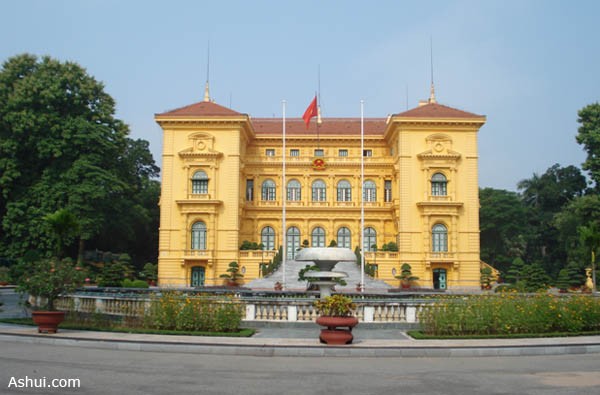(VOVworld)- Hanoi is developing rapidly with modern high-rise buildings mushrooming. But there are still many old buildings with French architectural styles dating back hundreds of years making Hanoi more beautiful.
The arrival of the French in Vietnam in the 19th century left its mark on the architectural landscape. The old buildings have diverse architectural styles but all are located in harmonious surroundings with pavements, trees and beautiful landscapes. The French architecture in Hanoi is unique. It doesn’t exist anywhere else in Southeast Asia and Asia.
Buildings constructed during the colonial period are scattered throughout the city- the Palace of the Governor General of Indochina, now the Presidential Palace, the Palace of the Governor of Tonkin, now the Government Guest House, the Bank of Indochina which became the Vietnamese State Bank, the Louis Finot Museum, now the National History Museum. The Long Bien bridge, which was completed in 1903 under Governor General of Indochina Paul Doumer, is a typical example of the French architectural style in Hanoi. The bridge, the cultural icon of Hanoi, was the first steel bridge to span the Red River.
 |
According to architect Hoang Dao Kinh, the French brought to Vietnam a formal architecture, brick construction and urban planning. They built in Hanoi a train station, a post office, a cathedral, an opera house, hotels, parks and fountains: “The French urbanized Hanoi where the French architectural heritage of past centuries is still omnipresent. These buildings have been adapted to the tropical climate and the Eastern cultural traditions of Vietnam. "
 |
To avoid the tropical heat, the architects adopted an eclectic style, opting for buildings with railings surrounded by gardens. The Palace of the Governor of Tonkin has yellow walls and green windows fitting perfectly with the honey-colored tropical sun. A short walk away is the famous Metropole Hotel, a luxurious and elegant building with white walls. Located in the heart of the city, the Hanoi Opera House is like a sumptuous palace of colonnades and arches. Strongly inspired by the Garnier Opera House in Paris, this building was built between 1901 and 1910.
 |
The grace of Hanoi also lies in its wide French-inspired street lined with beautiful villas and ancient trees. Each house has its own style that reflects the different regions of France. The style of the central region can be found in Phan Dinh Phung, Hoang Dieu, Tran Phu and Le Hong Phong street while the southern style left its mark on Quang Trung and Tran Quoc Toan street. The Indochinese style dominates the houses in Ly Nam De street. There are more than 1,600 villas dating from the French colonial regime, two-thirds owned by the state. Hanoi authorities recently launched a project to upgrade these old villas. Nguyen Thi Hoa owns a villa in Tran Quoc Toan Street: "It is time to restore these old villas. I very much welcome the support of the state. The restoration work will be more effective if the state and people work together".
The French architectural heritage blended with historical relics like the Temple of Literature, the One Pillar Pagoda and the Old Quarter of Hanoi make Hanoi attractive and unique. As it grows, Hanoi remains aware that preserving its architectural heritage is a way to ensure sustainable growth.